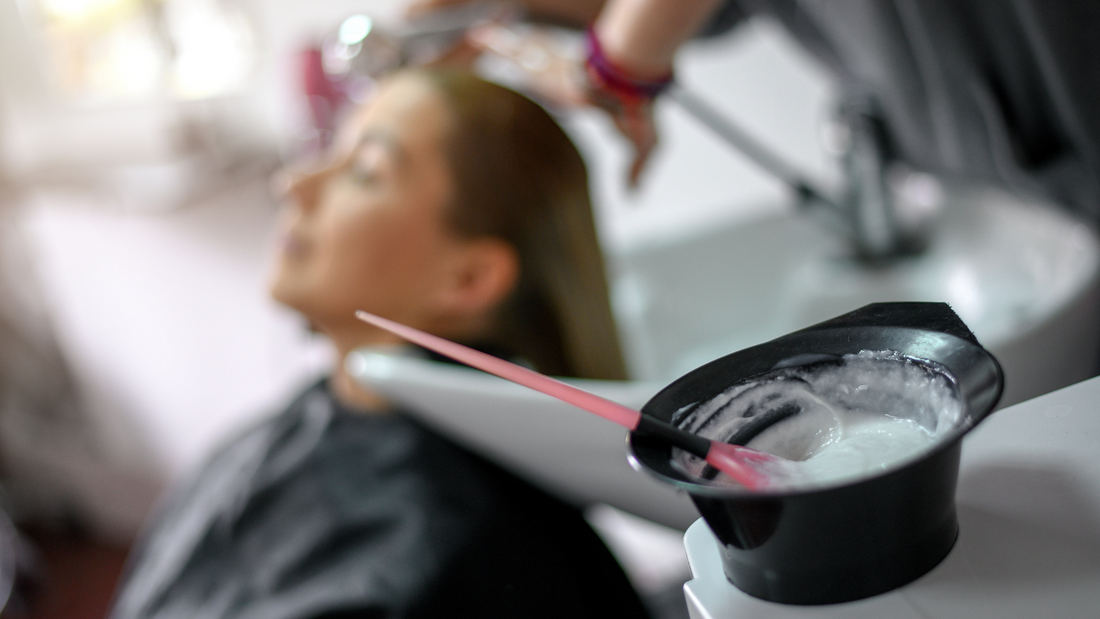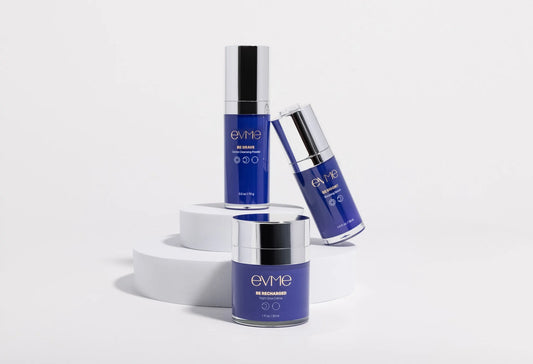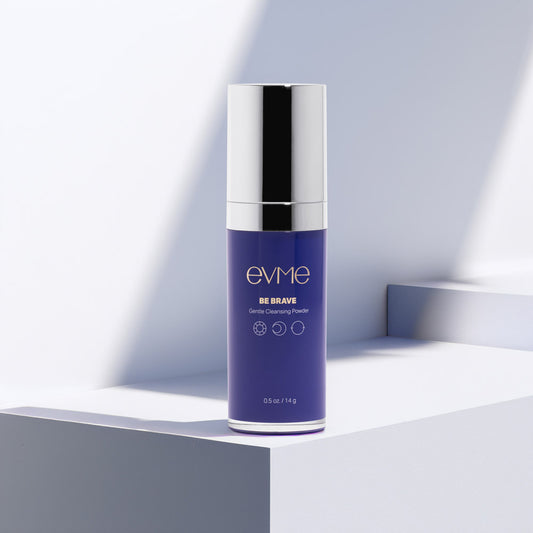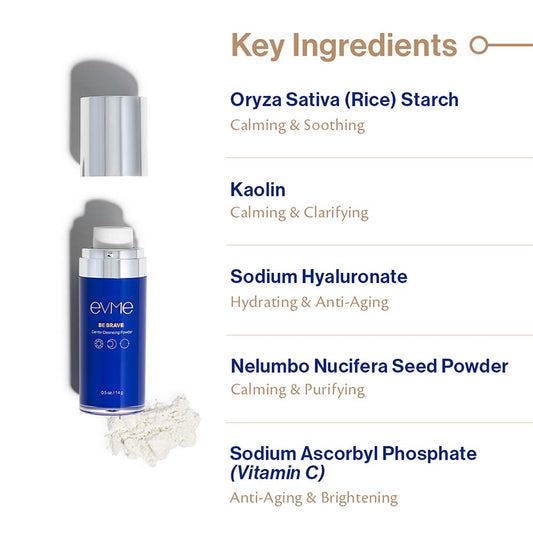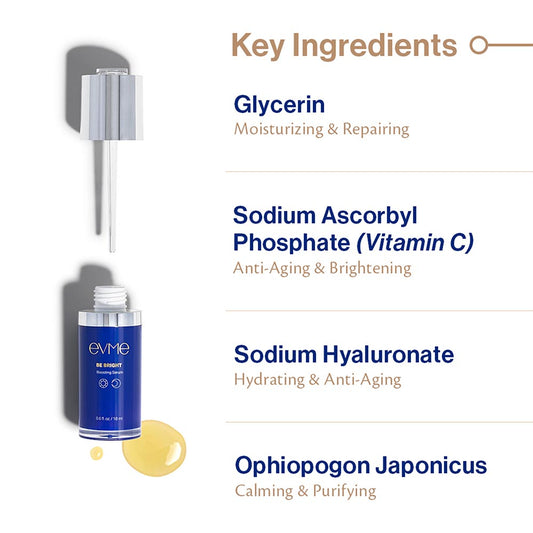Try Evme, allergist-created luxe skincare for sensitive and allergic skin.
Shop All ProductsIngredients to Avoid if You Have Reactive Skin
August 16, 2022
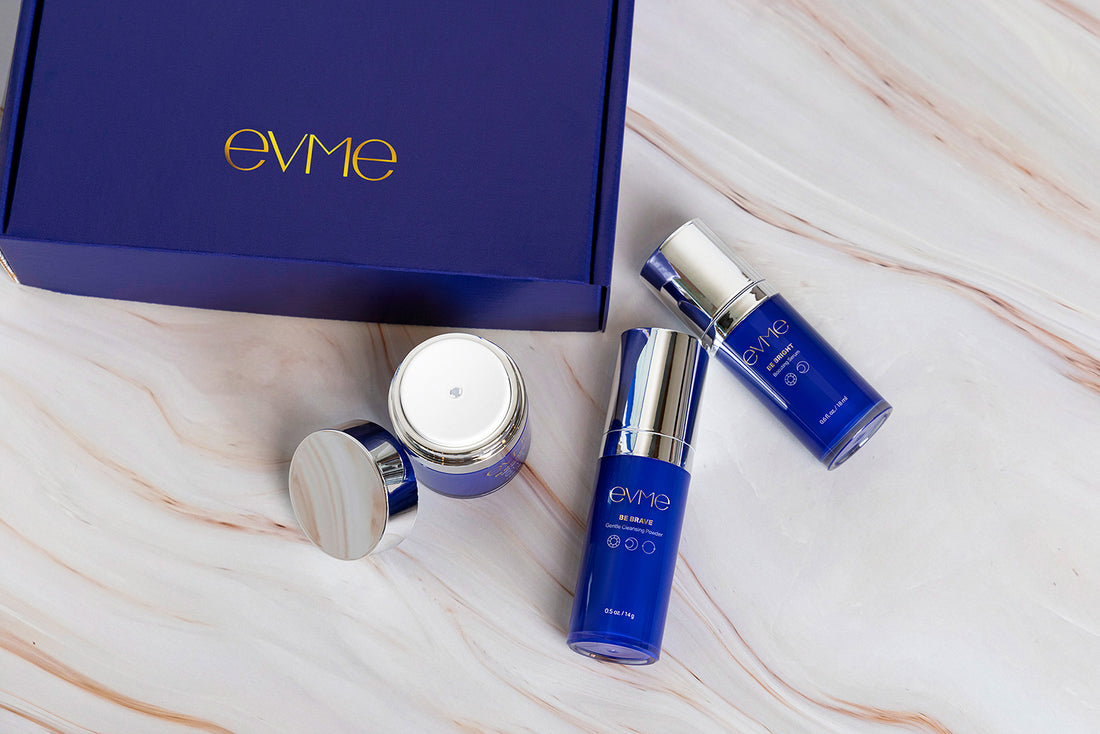
Unfortunately, anyone who has skin, and especially those with sensitive skin (including myself) can have topical skin allergies. As an allergy doctor, I wasn’t at all surprised to find out that over 90% of products marketed as “hypoallergenic” actually still contain at least 1 major contact allergen!
The marketing term “hypoallergenic” is not actually regulated by any agency. I feel that “hypoallergenic” is just not good enough. We need to aim to be as close to “sans-allergenic” or without allergens, especially with the way that allergies are rising worldwide.
In my position as a physician, I’ve felt the need to help people learn what ingredients and items to avoid so we can stop aggravating our largest organ—our skin—just by using items that claim to take care of it.
So, not only do I use my knowledge from over a decade of research and clinical experience at MIT, Cornell, UW, and Stanford; I also use the strict screening process I call “The Evme Method” to make sure our Evme line of skincare products takes incredible care of your skin—without any of the thousands of allergen-causing ingredients I have detected in my practice. And I also want to help you understand what you can avoid—and why—to help you dodge any potential topical skin allergies.
What to Avoid if You Don't Want Skin Allergies
Metals: Nickel is a huge allergen!
You may not realize that you’re being exposed to metals in your daily life but the way they are used in products can be quite sneaky. Nickel is very commonly used metal that’s often combined with other metals in a wide range of products you may wear. Nickel is used in jewelry (especially costume jewelry) so you may want to think twice before you purchase costume jewelry necklaces that can cause a rash around your neck, especially if you tend to sweat often. Though the cost for costume jewelry necklace, earrings, rings, bracelets and watches is usually less than fine jewelry, the savings may not seem worth it if you’re constantly dealing with allergic reactions to it. And, nickel can even be found in belt buckles, purse straps, zippers and snaps on clothing, keys, coins, batteries and even in eye makeup! So, if you tend to have allergic reactions to nickel, keep an eye out for how you can limit your exposure to these items. You can avoid certain jewelry and be mindful of metal accessories that may be touching your skin.
Where else is nickel hiding?
Nickel is also commonly found in medical implants. If you have an allergy to a surgically-implanted medical implant, it may present with a reaction at the area of the implant, as it may seem like it’s perpetually infected or painful for a prolonged period of time after your surgery. What can you do about this if you need that implant? Titanium is generally a good replacement for people who are allergic to nickel.
Does that mean you should go for the gold? Unfortunately, gold is also starting to emerge as a metal allergen. This is a tough one because most people allergic to nickel think gold should be okay. However, sometimes people can have allergic reactions to gold, too! Nickel can also be blended into certain fine jewelry too. White gold can contain nickel, as can some lower carat varieties of yellow gold (under 24 kt). The good news? Platinum and titanium tend to be less reactive on skin (but definitely more pricey!). Rhodium plating can also help with reducing reactions to jewelry, but when the rhodium starts wearing off, reactions can occur to the exposed nickel underneath.
Fragrances
Unfortunately, natural and artificial fragrances can cause skin to react with allergies—even to so-called “unscented” products—so be careful. And, I’m not just talking about perfumes and scented oil rollers. Fragrances can be found in so many products we come in contact with every day, including laundry detergents, fabric softeners, and even makeup products!
There are many different types of fragrances in this category, and if you have sensitive skin, you will probably just do better with products labeled “fragrance free.” Even if you can’t detect the faintest scent in a product, it could still have fragrances that might be masking the product’s bad natural smell. What’s even trickier is that both “unscented” and “fragrance-free” categories can actually still contain essential oils, which is a category of well-known triggers for contact dermatitis (skin allergies).
So, what can you do? Read your labels!
Labeling for fragrances can be non-specific, and sometimes, you’ll see a label that just says “fragrance” that could contain any number of hidden fragrance allergens. Also, it's common for products to use something called “fragrance mixes” like Fragrance Mix I and Fragrance Mix II, which are pre-made sets of fragrances put together, and notorious for causing skin allergies.
I am not advocating that you deny yourself the luxury of wearing your favorite scents or using products with your favorite fragrances that you know you don’t react to . However, there are ways to enjoy scents without having to suffer from allergic reactions on your skin, such as the delightful fragrances that come from your favorite foods!
Balsam of Peru
Though you may not have heard of this ingredient, I’m going to give you a tiny science lesson with it to help you be a sleuth and proactive participant in avoiding allergic reactions. Also known as “myroxylon pereirae oleoresin,” this aromatic resin comes from trees in Central America and is used as a fragrance for some skin care products, perfumes, and other scented items like candles, diaper creams. It may even be used as a flavoring for certain foods! It also possesses some antiseptic properties. So make sure to check labels. Thankfully, Balsam of Peru is not being used in products as much as it was in the past. Still, keep checking labels before you use or buy a product to make sure this ingredient is not in it.
Preservatives
Preservatives are often tricky to detect on an ingredient label because there are so many of them. And we do need preservatives! These are used to prolong the shelf-life of certain products so they don’t grow dangerous bacteria if you don’t use them fast enough. But, just like fresh food, skincare products don’t need as many preservatives if you use them regularly after you first get them instead of opening them and then letting them sit for over 6 months to a year.
Here are some of the preservatives to look for on a label and potentially avoid to help prevent allergies in sensitive skin, and really any skin type:
- Methylisothiazolinone and methylchloroisothiazolinone (these are extemely common)
- Propylene and butylene glycols
- Disodium and tetrasodium EDTA
- Diazolidinyl and imidazolydyl urea
- Parabens (methylparaben, polyparaben, butylparaben, etc.)
- Phenoxyethanol, an extremely popular preservative these days
- Quaternium-15
And generally, the most common preservatives to avoid?
Formaldehyde and Formaldehyde-Releasing Agents
These are so often found in cosmetics and skin care, as well as in personal hygiene products like soaps and shampoos that they deserve their own callout! Plus, many companies are being sneaky about the ways they list potentially harmful ingredients in their products!
Formaldehyde
For example, many companies have started to take formaldehyde out of the formulas of their products, but replace it with formaldehyde release agents, which aren’t as well-known and will ultimately produce formaldehyde again and can still cause skin allergies.
Some of the preservatives I listed above formaldehyde are in the formaldehyde releasing category like the urea products and quarternium-15. Another sneaky formaldehyde replacement to keep an eye out for and avoid is Bronopol.
So when it comes to avoiding allergies and toxins, knowledge really is power.
PPD (and it’s cousin PTD)
Paraphenylenediamene (aka PPD) is a dye that’s used in most permanent hair colors and sometimes even in some semi-permanent hair colors. Unfortunately, it’s really hard to find hair dyes without PPD. Some companies have marketed “PPD free” hair colors, but have replaced it with PTD (paratoluenediamene) which unfortunately, cross reacts with PPD close to about 80% of the time. Another sneaky marketing ploy.
Unfortunately, it’s super tough to find proper replacements for hair dye when you’re allergic to PPD. Some semi-permanent dyes don’t contain PPD so you might have better luck with semi-permanent dyes if you are allergic to PPD. I’ve had some patients have luck with a combo of indigo and henna to color their hair. To avoid a potential allergic reaction, always start with a patch test. You can usually find directions for how to conduct a patch test on the label of the hair dye product.
Where else is this dye that can cause allergic reactions lurking? PPD can also be found in some temporary tattoos so be mindful of this if you get allergic reactions often.
Lanolin
Lanolin is a natural wool alcohol taken from sheep. It functions as a type of emollient (aka moisturizer), which is used in different types of creams and personal care products. Lanolin is a major component of a heavy moisturizing product called Aquaphor. It’s also often found in a variety of nipple creams for breastfeeding mothers. I had many patients think they had mastitis when it really was contact dermatitis from their nipple cream!
And the List Goes On...
The list of potential allergens really goes on and on. Still, I hope this helped you learn about some of the most common substances that cause allergic reactions in the widest range of people.
I urge you to take a look at the skincare you are using, actually turning the pretty bottle around and looking at the full ingredient list to see what’s in there. You may be surprised to discover that you recognize many of those listed in this article!
Information is Power
After spending hundreds of hours scouring through ingredients in products for patients on online retail websites, I was incredibly frustrated to find that there was not one single overarching solution I could present to all my patients as “safe” for all reactive skin.
I believe that you deserve to not only be empowered with information to be proactive about taking care of the health of your skin, but also have super effective, luxurious skincare products that improve the health and appearance of your skin—without hidden allergy-causing ingredients.
That’s why I created Evme.
Have a question about an ingredient that could cause a skin allergy? Write it in the comments!
Recommended articles
Evme Sans-Allergenic Skincare Products
- Choosing a selection results in a full page refresh.



